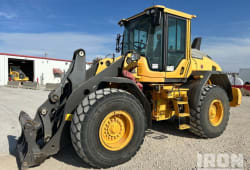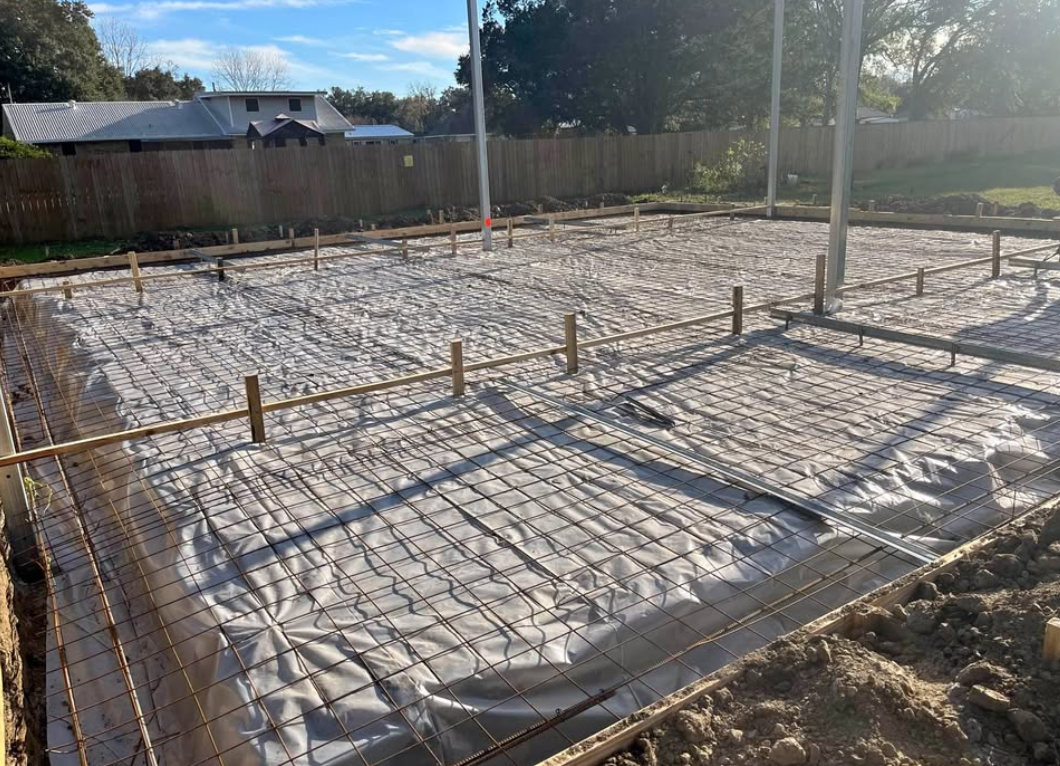Significance of Preventive Maintenance: Warranty Compliance and Protection
14 Min read
)
August 12, 2023
In today's fast-paced business environment, companies rely heavily on their equipment to keep operations running smoothly. Whether it's the machinery on a manufacturing floor or the computers in an office, these assets play a vital role in productivity and profitability. To ensure the reliability and longevity of these assets, organizations must prioritize preventive maintenance. In addition to its impact on equipment performance and longevity, preventive maintenance is also crucial for warranty compliance and protection. In this article, we will explore the importance of preventive maintenance, the basics of warranty compliance, how to implement a preventive maintenance program, and the legal aspects surrounding warranty compliance and preventive maintenance.
Understanding the Importance of Preventive Maintenance
Preventive maintenance refers to a systematic approach that aims to identify and address potential issues before they escalate into major problems. By regularly inspecting, cleaning, and servicing equipment, organizations can extend its lifespan, reduce unexpected breakdowns, and optimize performance. Preventive maintenance involves routine tasks such as lubrication, filter replacement, calibration, and visual inspections. These proactive measures not only minimize downtime and repair costs but also improve safety and efficiency.
Let's delve deeper into the concept of preventive maintenance and explore its various aspects.
The Role of Preventive Maintenance in Equipment Longevity
Regular preventive maintenance significantly contributes to equipment longevity. By identifying and addressing minor issues early on, organizations can prevent them from spiraling into major failures that may require expensive repairs or even replacement. With proper care and maintenance, the equipment can operate at its peak performance for years, maximizing productivity and reducing the need for costly replacements.
For example, consider a manufacturing plant that relies heavily on a complex conveyor system to transport materials. Without regular preventive maintenance, the conveyor system may experience issues such as misalignment, worn-out belts, or faulty sensors. If left unattended, these problems can lead to unexpected breakdowns, production delays, and increased costs. However, with a well-implemented preventive maintenance program in place, the plant can schedule regular inspections, lubrication, and belt replacements to ensure the conveyor system operates smoothly. This proactive approach not only extends the system's lifespan but also minimizes the risk of costly downtime and repairs.
How Preventive Maintenance Impacts Warranty Compliance
Warranty compliance is a critical aspect of equipment ownership. A warranty serves as a promise from the manufacturer or seller that the product will meet certain quality and performance standards within a specified period. Failure to comply with warranty requirements can lead to claim denials and unexpected repair costs. Preventive maintenance plays a vital role in warranty compliance by ensuring that equipment is well-maintained as per the manufacturer's recommendations. Regular maintenance not only helps keep equipment in optimal condition but also provides evidence of compliance if warranty claims arise.
Consider the case of a company that invests in high-end computer servers for its data center. These servers come with a warranty that guarantees their performance and reliability for a specific duration. To ensure warranty compliance, the company establishes a preventive maintenance schedule that includes regular cleaning, software updates, and temperature monitoring. By adhering to these maintenance practices, the company not only maximizes the lifespan and performance of the servers but also safeguards its warranty coverage. In the event of any issues, the company can provide documentation of the preventive maintenance activities performed, strengthening its position when making warranty claims.
Furthermore, preventive maintenance can also help identify potential warranty-related issues early on. For instance, during routine inspections, technicians may discover a faulty component that is covered under warranty. By promptly addressing such issues, organizations can take advantage of warranty coverage and avoid incurring unnecessary expenses.
In conclusion, preventive maintenance plays a crucial role in ensuring equipment longevity and warranty compliance. By implementing a proactive maintenance program, organizations can minimize downtime, reduce repair costs, and maximize the lifespan of their equipment. Moreover, preventive maintenance provides peace of mind by ensuring compliance with warranty requirements and protecting against unexpected repair expenses. So, whether it's a manufacturing plant, a data center, or any other organization relying on equipment, investing in preventive maintenance is a wise decision that yields long-term benefits.
The Basics of Warranty Compliance
Understanding the terms and conditions of your equipment warranty is essential to maintain compliance. Warranties vary between manufacturers and products, but common requirements include routine maintenance, proper use, and prompt reporting of issues. Knowing the specific terms and conditions of your warranty ensures that you meet all the necessary obligations to protect your investment.
When it comes to warranty compliance, there are several key factors to consider. First and foremost, it is crucial to carefully review the warranty documentation provided by the manufacturer before equipment installation and operation. This documentation will outline the specific terms and conditions of the warranty, including any maintenance requirements, recommended service intervals, and the consequences of non-compliance.
One important aspect to pay attention to is whether the warranty requires maintenance tasks to be performed by authorized technicians or using approved parts. This means that you may need to rely on the expertise of professionals who have been certified by the manufacturer to handle the maintenance and repair of your equipment. By understanding these terms, you can take proactive steps to fulfill your warranty obligations and ensure that your equipment remains in optimal condition.
Understanding the Terms of Your Warranty
Before diving into the details of warranty compliance, it's essential to have a clear understanding of the terms of your warranty. This includes not only the duration of the warranty but also any limitations or exclusions that may apply. Some warranties may have specific clauses that limit coverage for certain types of damage or require adherence to specific usage guidelines.
Furthermore, it's important to familiarize yourself with any warranty registration requirements. Some manufacturers may require you to register your equipment within a certain timeframe to activate the warranty. Failing to do so may result in the warranty being voided, leaving you responsible for any repairs or replacements.
Common Violations of Warranty Compliance
Failure to comply with warranty requirements is a common reason for claim denials. To ensure that you are in full compliance, it's important to be aware of the most common violations that can jeopardize your warranty coverage.
Neglecting routine maintenance is one such violation. Regular maintenance is often a requirement to keep your equipment in good working condition and prevent potential issues from arising. This may include tasks such as cleaning, lubricating, or inspecting various components. Failure to perform these routine maintenance tasks as advised by the manufacturer can result in the warranty being voided.
Using unauthorized replacement parts is another violation that can lead to warranty issues. Some warranties specify that only approved parts should be used for any repairs or replacements. Using non-approved parts may not only void the warranty but also compromise the performance and safety of your equipment.
Lastly, not reporting issues promptly can also be a violation of warranty compliance. If you encounter any problems or malfunctions with your equipment, it's important to notify the manufacturer or authorized service provider as soon as possible. Delaying the reporting of issues may result in the warranty being voided or the manufacturer denying your claim.
In conclusion, warranty compliance is a crucial aspect of protecting your investment in equipment. By understanding the terms and conditions of your warranty, adhering to maintenance requirements, using authorized parts, and promptly reporting any issues, you can ensure that your warranty remains valid and your equipment remains in optimal condition.
Implementing a Preventive Maintenance Program
Developing and implementing a preventive maintenance program is the foundation for effective equipment maintenance and warranty compliance. A well-designed program ensures consistency and accountability in maintenance activities. It involves several key steps, including:
Preventive maintenance is a proactive approach to equipment maintenance that aims to prevent breakdowns and extend the lifespan of assets. By implementing a preventive maintenance program, organizations can reduce unplanned downtime, increase productivity, and minimize repair costs. Let's take a closer look at the steps involved in developing a preventive maintenance schedule:
Steps to Develop a Preventive Maintenance Schedule
Identify Critical Equipment: Begin by identifying the equipment critical to your organization's operations. These are the assets that, if they were to fail, would have the most significant impact on productivity or safety. Consider factors such as the equipment's age, usage frequency, and importance in the production process. For example, in a manufacturing facility, critical equipment may include large machinery, such as CNC machines or industrial robots, that are vital for production. In a hospital, critical equipment may include life-support systems or diagnostic machines that directly impact patient care.
Review Manufacturer Recommendations: Consult the equipment manufacturer's recommendations for maintenance tasks, intervals, and any specific instructions. Manufacturers often provide detailed guidelines on how to properly maintain their equipment to ensure optimal performance and longevity. Manufacturer recommendations may include tasks such as lubrication, filter replacements, calibration, and inspections. Following these guidelines helps maintain equipment warranties and ensures that maintenance is performed according to industry best practices.
Establish Task Frequencies: Determine the appropriate frequency for each maintenance task based on manufacturer recommendations, equipment usage, and historical maintenance data. Consider factors such as the equipment's operating conditions, production demands, and any regulatory requirements. Some maintenance tasks may need to be performed daily, while others may be required monthly, quarterly, or annually. It's crucial to strike a balance between performing maintenance frequently enough to prevent failures and not overburdening resources with unnecessary tasks.
Assign Responsibility: Clearly define who is responsible for each maintenance task, whether it's an in-house technician or a third-party service provider. Assigning responsibility ensures accountability and helps ensure that tasks are completed in a timely and effective manner. When assigning responsibility, consider the expertise and availability of personnel. Skilled technicians may be required for complex tasks, while routine inspections can be assigned to less specialized staff members. It's also important to establish clear lines of communication and escalation procedures in case of any maintenance issues or emergencies.
Create a Schedule: Develop a comprehensive schedule that outlines when each maintenance task should be performed. Consider factors such as equipment availability and production downtime. A well-planned schedule helps minimize disruptions to operations and allows for the efficient allocation of resources. When creating a schedule, it's important to balance preventive maintenance activities with production demands. Some tasks may need to be performed during planned downtime, while others can be scheduled during periods of lower production activity. Flexibility is key to ensuring that maintenance activities do not negatively impact overall productivity.
Document and Track: Establish a system for documenting and tracking maintenance activities. This includes recording completed tasks, any issues encountered, and any parts or consumables used. Proper documentation helps create a maintenance history for each asset, enabling better analysis of equipment performance and identification of recurring issues. Modern maintenance management software can streamline documentation and tracking processes by providing digital platforms for recording and organizing maintenance data. These tools often offer features such as automated reminders, work order management, and real-time reporting, making it easier to stay organized and maintain accurate records.
Regularly Review and Adapt: Periodically review your preventive maintenance program to ensure its effectiveness and make adjustments as necessary. Technology advancements and equipment usage changes may require modifications to your program over time. Regularly reviewing your preventive maintenance program allows you to identify areas for improvement and address any evolving maintenance needs. It's important to stay up to date with industry trends and emerging technologies that can enhance your maintenance practices. Additionally, feedback from maintenance personnel and equipment users can provide valuable insights for program optimization.
Tools and Resources for Effective Preventive Maintenance
Implementing an efficient preventive maintenance program is easier when supported by the right tools and resources. Consider the following:
- Maintenance Management Software: Utilize specialized software to streamline scheduling, documentation, and tracking of maintenance tasks. These tools can generate automated reminders, store historical data, and even provide insights for data-driven decision-making. Maintenance management software centralizes maintenance-related information, making it easily accessible to all stakeholders. It simplifies the process of creating and updating maintenance schedules, assigning tasks, and tracking progress. By leveraging the power of technology, organizations can optimize their preventive maintenance efforts and improve overall equipment reliability.
- Training and Education: Equip your maintenance staff with the knowledge and skills necessary to perform preventive maintenance tasks effectively. Investing in training and education ensures that maintenance personnel are equipped with the latest industry knowledge and best practices. This includes technical training on specific equipment, safety protocols, and general maintenance principles. Continuous learning and professional development opportunities help improve the overall competency and efficiency of the maintenance team.
- Equipment Testing and Monitoring: Invest in equipment testing and monitoring tools to detect potential issues early. This includes vibration analyzers, thermal imaging cameras, and condition monitoring sensors. Testing and monitoring tools enable proactive maintenance by identifying early signs of equipment deterioration or malfunction. Vibration analyzers can detect mechanical imbalances or misalignments, thermal imaging cameras can identify overheating components, and condition monitoring sensors can provide real-time data on equipment performance. By leveraging these tools, organizations can detect and address potential issues before they escalate into costly failures.
The Connection Between Preventive Maintenance and Warranty Protection
Regular maintenance not only helps organizations extend the life of their equipment but also safeguards their warranty protection. Here are some key ways in which preventive maintenance enhances warranty protection:
How Regular Maintenance Protects Your Warranty
Performing regular maintenance tasks as prescribed by the manufacturer ensures that your equipment functions optimally and remains within warranty compliance. By keeping detailed records of the maintenance performed, you have verifiable evidence to support warranty claims, preventing denials due to alleged negligence.
Case Studies: Warranty Claims Denied Due to Lack of Maintenance
There have been numerous cases where warranty claims were denied due to inadequate maintenance. In one instance, a manufacturing company's warranty claim for a malfunctioning machine was rejected because they failed to provide evidence of regular maintenance. The manufacturer argued that the lack of maintenance contributed to the machine's failure. These examples highlight the importance of preventive maintenance in protecting warranty claims.
Legal Aspects of Warranty Compliance and Preventive Maintenance
Warranty compliance and preventive maintenance also have legal implications that organizations need to be aware of. Failure to comply with warranty requirements can lead to legal consequences and financial liabilities. Here are two key aspects to consider:
Understanding the Magnuson-Moss Warranty Act
The Magnuson-Moss Warranty Act is a federal law that governs warranties for consumer products. It sets guidelines for warranties and establishes consumer protection measures. It requires manufacturers to disclose warranty terms and prohibits deceptive practices. Understanding this law is crucial for both businesses and consumers to ensure compliance.
Legal Consequences of Warranty Non-Compliance
Failing to comply with warranty requirements can result in legal consequences. Manufacturers may deny warranty claims, leaving the organization responsible for repair or replacement costs. In some cases, customers may take legal action against the organization if they believe their warranty rights have been violated. Therefore, it's essential to prioritize warranty compliance and preventive maintenance to avoid legal entanglements.
Conclusion: The Value of Preventive Maintenance and Warranty Compliance
Preventive maintenance is an essential practice for organizations that rely on equipment to achieve their goals. By implementing a comprehensive preventive maintenance program, businesses can ensure equipment longevity, minimize unexpected breakdowns, and optimize performance. Furthermore, preventive maintenance plays a crucial role in warranty compliance, protecting businesses from unexpected repair costs. Understanding warranty terms, following maintenance guidelines, and keeping detailed records are vital in safeguarding warranty protection. Compliance with the Magnuson-Moss Warranty Act and other applicable laws is essential to avoid legal consequences. By prioritizing preventive maintenance and warranty compliance, businesses can maximize the value of their equipment investments while minimizing risks and uncertainties.
Key Takeaways for Businesses and Consumers
- Preventive maintenance is essential for equipment longevity, minimizing breakdowns, and optimizing performance.
- Understanding warranty terms, compliance requirements, and maintenance instructions is crucial for warranty protection.
- Implementing a preventive maintenance program involves identifying critical equipment, assigning responsibilities, and creating a schedule.
- The use of maintenance management software, training, and monitoring tools can enhance the effectiveness of preventive maintenance.
- Failure to comply with warranty requirements can result in claim denials and potential legal consequences.
- The Magnuson-Moss Warranty Act provides guidelines and consumer protection measures for warranties.
Future Trends in Preventive Maintenance and Warranty Compliance
As technology continues to advance, preventive maintenance and warranty compliance are expected to be affected by several trends:
- Internet of Things (IoT) Integration: IoT devices and sensors can provide real-time data about equipment performance, allowing for predictive maintenance and more accurate warranty compliance monitoring.
- Condition-Based Maintenance: Advanced analytics and machine learning algorithms can enable organizations to move away from time-based maintenance schedules and transition to condition-based maintenance, optimizing resource allocation and minimizing downtime.
- Automated Warranty Management: Software solutions are emerging to automate warranty claim management, ensuring compliance and simplifying the process for both businesses and consumers.
By staying informed and embracing these advancements, businesses, and consumers can adapt and enhance their preventive maintenance and warranty compliance practices, setting the stage for even more efficient operations and lower costs in the future.

Caleb Woods is an experienced content specialist and an editor at Boom & Bucket, blending his journalism background with expertise in the heavy equipment industry. He delivers engaging, informative content to help professionals stay informed and make smarter decisions in the machinery market.














